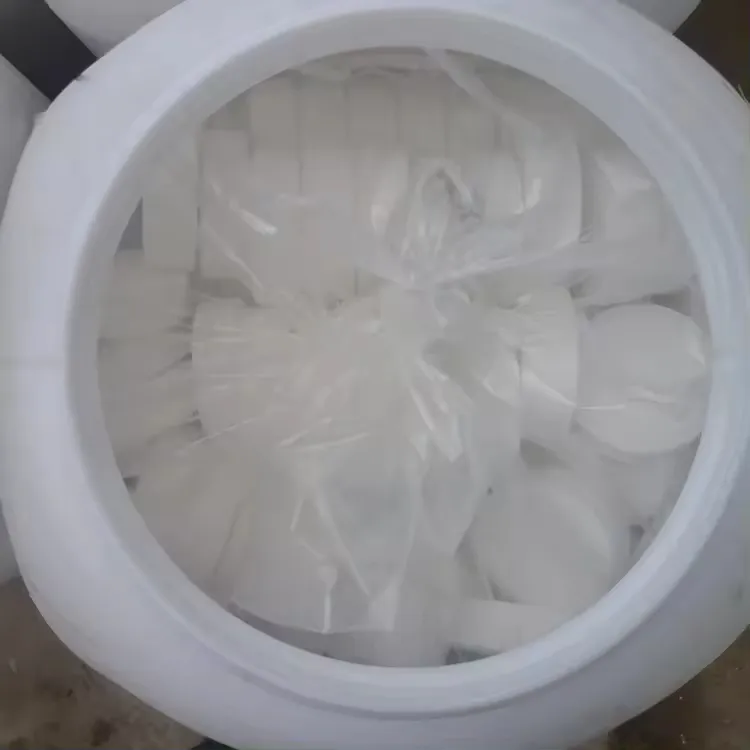



10 sodium hydroxide
Understanding 10% Sodium Hydroxide Solution
Sodium hydroxide (NaOH), commonly known as caustic soda or lye, is a highly versatile chemical that plays a significant role in various industrial and household applications. A 10% sodium hydroxide solution is particularly prevalent due to its effectiveness and relatively safe handling characteristics compared to more concentrated forms. In this article, we explore the nature, applications, and precautions associated with a 10% sodium hydroxide solution.
What is Sodium Hydroxide?
Sodium hydroxide is an inorganic compound that consists of sodium ions (Na⁺) and hydroxide ions (OH⁻). It is a strong base with a high affinity for water, making it highly soluble. The chemical is often encountered in various forms, including solid pellets, flakes, and as a liquid solution. The 10% solution indicates that there are 10 grams of sodium hydroxide in every 100 mL of solution. This concentration is strong enough to be effective for various applications while mitigating some risks associated with more concentrated solutions.
Industrial Applications
One of the primary uses of a 10% sodium hydroxide solution is in industrial cleaning and maintenance. Its alkalinity makes it an excellent agent for breaking down fats, oils, and grease, which is why it is often used in commercial kitchen cleaning products. Additionally, sodium hydroxide is integral in the manufacturing of soap and detergents, where it reacts with fats in a process called saponification to produce glycerin and soap.
Another significant application of sodium hydroxide is in the paper and pulp industry. Here, it is utilized in the pulping process, which helps to separate cellulose fibers from lignin and other components of wood. This process is critical for producing high-quality paper products.
Sodium hydroxide is also used in water treatment facilities, where it helps to adjust the pH levels of water, making the water safer for consumption by neutralizing acidic contaminants. Furthermore, it is employed in the production of various chemicals and fertilizers, contributing to different industrial processes.
10 sodium hydroxide

Laboratory Uses
In laboratory settings, a 10% sodium hydroxide solution is often used as a reagent in titrations and other analytical procedures to determine the concentration of acidic solutions. Its strong alkaline nature allows scientists to conduct experiments that require precise pH adjustments.
Handling and Safety Precautions
While a 10% sodium hydroxide solution is less hazardous than more concentrated forms, it still requires careful handling. Sodium hydroxide can cause serious chemical burns upon contact with skin or eyes, so protective equipment such as gloves, goggles, and lab coats is essential when working with this solution.
In case of an accidental spill or contact, it is crucial to take immediate action. For spills, the area should be evacuated and cleaned using appropriate spill containment materials. If sodium hydroxide comes into contact with the skin or eyes, it is vital to rinse the affected area thoroughly with water and seek medical attention if necessary.
Conclusion
A 10% sodium hydroxide solution is an invaluable chemical used across various industries and laboratories. Its effectiveness in cleaning, chemical manufacturing, and analytical processes makes it a staple in many applications. However, it is crucial to handle sodium hydroxide with care, as its corrosive nature can pose risks if proper safety precautions are not followed. By understanding the properties and uses of sodium hydroxide, individuals and industries can benefit from its potential while minimizing hazards.
-
Why Sodium Persulfate Is Everywhere NowNewsJul.07,2025
-
Why Polyacrylamide Is in High DemandNewsJul.07,2025
-
Understanding Paint Chemicals and Their ApplicationsNewsJul.07,2025
-
Smart Use Of Mining ChemicalsNewsJul.07,2025
-
Practical Uses of Potassium MonopersulfateNewsJul.07,2025
-
Agrochemicals In Real FarmingNewsJul.07,2025
-
Sodium Chlorite Hot UsesNewsJul.01,2025










